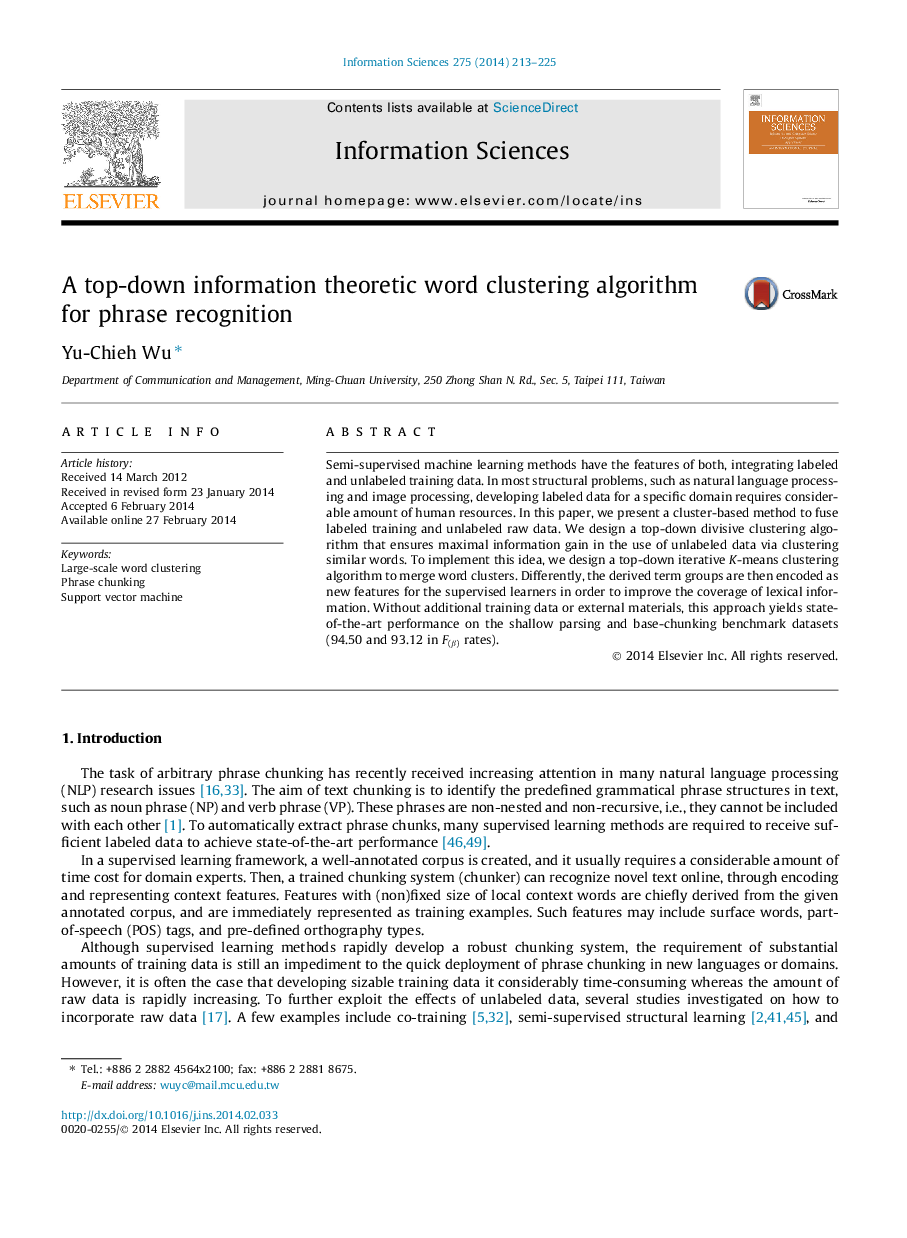| Article ID | Journal | Published Year | Pages | File Type |
|---|---|---|---|---|
| 392610 | Information Sciences | 2014 | 13 Pages |
•We propose an efficient KL-based word clustering algorithm for large-scale text collection.•The word clusters were adopted as features to enhance the sequential taggers.•The use of word clusters improves the prediction power (using statistical significant tests).
Semi-supervised machine learning methods have the features of both, integrating labeled and unlabeled training data. In most structural problems, such as natural language processing and image processing, developing labeled data for a specific domain requires considerable amount of human resources. In this paper, we present a cluster-based method to fuse labeled training and unlabeled raw data. We design a top-down divisive clustering algorithm that ensures maximal information gain in the use of unlabeled data via clustering similar words. To implement this idea, we design a top-down iterative K-means clustering algorithm to merge word clusters. Differently, the derived term groups are then encoded as new features for the supervised learners in order to improve the coverage of lexical information. Without additional training data or external materials, this approach yields state-of-the-art performance on the shallow parsing and base-chunking benchmark datasets (94.50 and 93.12 in F(β) rates).
